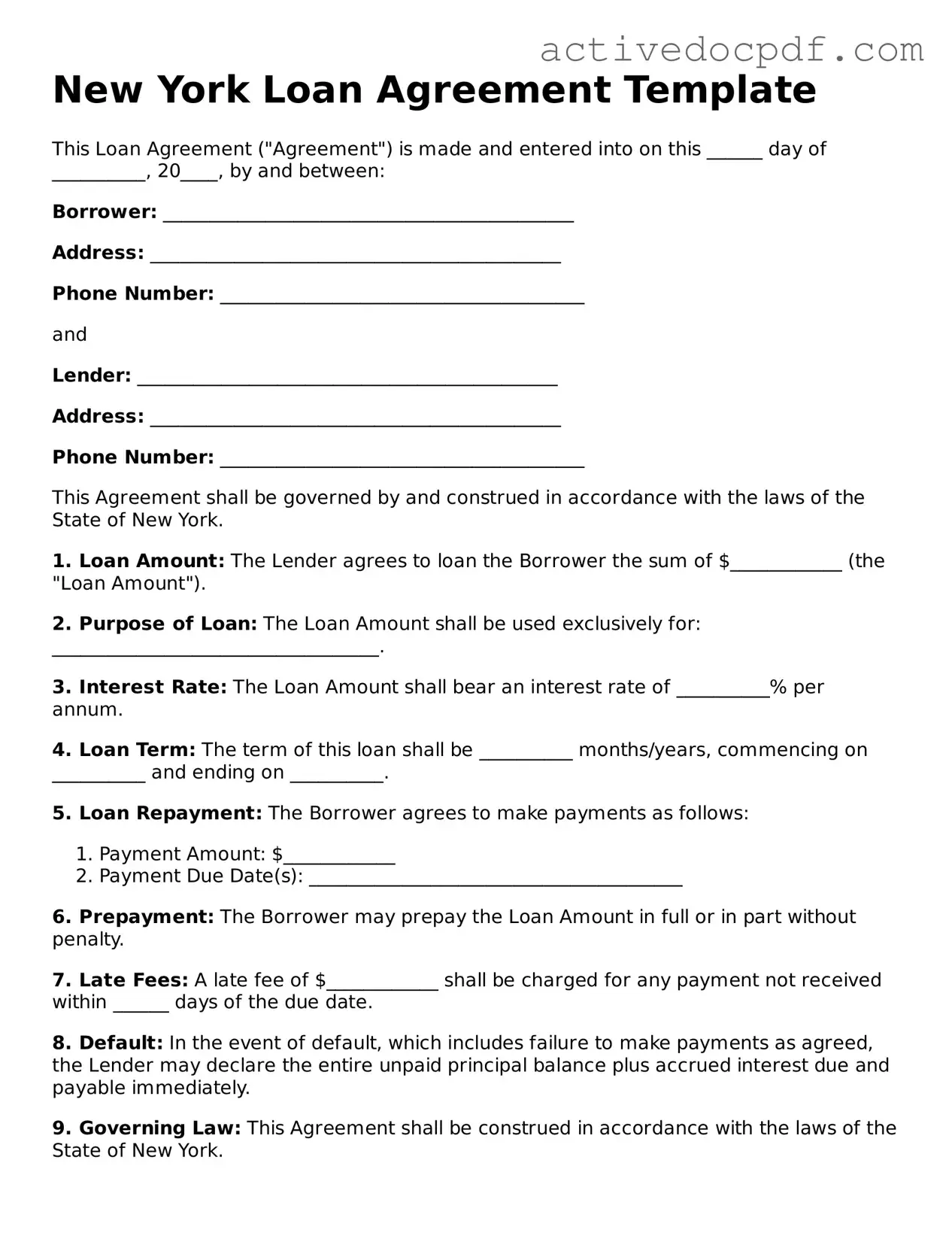The New York Loan Agreement form is a legal document that outlines the terms and conditions of a loan between a lender and a borrower. This agreement specifies the amount borrowed, the interest rate, repayment schedule, and any collateral involved. It serves as a formal record of the loan and protects the rights of both parties.
Who typically uses a New York Loan Agreement?
Individuals and businesses often use the New York Loan Agreement. Lenders, such as banks or private investors, utilize this form to ensure that their interests are safeguarded. Borrowers, whether they are individuals seeking personal loans or businesses looking for capital, also rely on this agreement to understand their obligations.
What are the key components of a New York Loan Agreement?
A comprehensive New York Loan Agreement generally includes the following components:
-
Loan Amount:
The total sum of money being borrowed.
-
Interest Rate:
The percentage charged on the borrowed amount, which can be fixed or variable.
-
Repayment Terms:
The schedule for repayment, including the frequency of payments and the duration of the loan.
-
Collateral:
Any assets pledged by the borrower to secure the loan.
-
Default Clauses:
Conditions under which the borrower may be considered in default and the lender's rights in such cases.
Is a New York Loan Agreement legally binding?
Yes, a New York Loan Agreement is legally binding once both parties sign the document. This means that both the lender and the borrower are obligated to adhere to the terms outlined in the agreement. If either party fails to comply, the other party may seek legal remedies.
Can a New York Loan Agreement be modified?
Yes, a New York Loan Agreement can be modified if both parties agree to the changes. It is important to document any modifications in writing and have both parties sign the updated agreement. This helps prevent misunderstandings and ensures that all changes are legally enforceable.
What happens if the borrower defaults on the loan?
If the borrower defaults, the lender has several options. These may include:
-
Initiating legal proceedings to recover the owed amount.
-
Seizing collateral if it was pledged as security for the loan.
-
Negotiating a repayment plan or settlement with the borrower.
The specific actions taken will depend on the terms outlined in the Loan Agreement and the laws governing such agreements in New York.
Are there any specific laws governing Loan Agreements in New York?
Yes, Loan Agreements in New York are governed by state laws, including the New York General Obligations Law and the New York Uniform Commercial Code. These laws establish the framework for contracts and financial transactions, ensuring that they are fair and enforceable. It is advisable for both parties to be aware of these laws when entering into a loan agreement.
A New York Loan Agreement form can be obtained from various sources, including:
-
Online legal document providers that offer customizable templates.
-
Attorneys who specialize in contract law.
-
Local banks or financial institutions that may provide standard forms.
It is essential to ensure that any form used complies with New York state laws and adequately addresses the specific needs of the parties involved.
